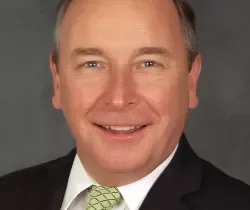If you’ve been a trade show organizer even for a short period of time, you know that event sponsorships can be crucial to the financial health and wellbeing of your event. Unlike other forms of advertising, sponsorship opportunities allow exhibiting companies to reach a highly qualified and captivated audience.
But is the traditional model of “give us your money and we’ll put your company’s name on X, Y or Z item at the trade show” really keeping up with today’s rapidly changing brand marketing landscape?
Recently, our team worked with the National Automatic Merchandising Association to help transform its tried-but-no-longer-true sponsorship program into a more streamlined, flexible offering boasting a year-round portfolio of marketing opportunities for exhibitors.
This revision and revamp helped NAMA’s two signature events, The NAMA Show and the Coffee, Tea and Water Show, increase their annual sponsorship revenue by more than 58 percent!
Achieving this kind of transformation comes from taking the time to talk with your sponsors, listening to what they really want and then hyper-customizing marketing opportunities that meet their individual needs.
Here are some simple steps for evolving your show’s traditional sponsorships into a comprehensive marketing program that your exhibitors will embrace:
Listen to Your Exhibitors
Conduct consultative, one-on-one “discovery” conversations with your most supportive exhibitors and ask open-ended questions about their overall business goals, objectives and marketing strategies.
Do your homework so you understand your sponsors’ industry and competitors, find out what they’re doing at other events and what they hope to accomplish at your show. This intel will help you create new marketing and sponsorship initiatives that not only provide more value to the exhibitor but also help grow revenue throughout the year.
For example, when we spoke with 30 of NAMA’s top sponsors, we learned that they didn’t see enough value in the existing sponsorships or pre-packaged bundles, which explained why both shows were experiencing a steady decrease in sponsorship sales.
So, we dug deeper to better understand how these companies measured ROI on their investment. We realized one size didn’t fit all – these companies had individual goals and benchmarks and our sponsor packages had to be customized in order to demonstrate value to each organization. In the end, that made all the difference.
Analyze Your Current Offerings
Re-evaluate your show’s existing sponsorship opportunities. Based on what you’ve learned from your discovery conversations, ditch what’s not working and add new options that exhibitors actually want.
We discovered that many of NAMA’s sponsors didn’t like the year-round solicitations for sponsorship dollars or bundles and that they wanted more new product promotions, thought leadership opportunities and digital marketing.
So, for the Coffee, Tea & Water show, we developed an online newsletter that features product introductions, case studies, images, show information, links to sponsors’ social media channels and promotional videos. It’s since become a staple at the show and fills up very quickly.
Become a Strategic Partner
Once you have a grasp on the kinds of marketing and communications tools your exhibitors really want, get creative and think of ways to customize a year-round marketing program that supports their individual goals and objectives.
For instance, we worked with the marketing team of one of NAMA’s major exhibitors to develop strategies that would deliver value based on the information they provided during our discovery conversations.
The company wanted to introduce a new product at The NAMA Show but they weren’t sure how to get the most out their efforts, so we came up with a program where their iconic mascot accompanied company reps distributing samples at the show’s entrance. People were lining up to test the product and more than 1,000 samples were handed out. Needless to say, the company was thrilled!
Deliver and Follow-up
After the show, follow up to make sure your sponsors achieved their objectives and if not, discuss what you can do differently to make sure they achieve their ROI.
It’s important for us to have metrics on everything we do, so once sponsors buy into these programs, we present them with a mid-year report that includes plenty of metrics and covers everything that’s been completed up to that point. We’ll talk about anything they want to tweak, anything new they want to promote, what their budgeting period is and then come up with a game plan for next year. That tees up another call a few months later.
All this effort will demonstrate to your sponsors that not only do you care about their success, but you also understand the relevance of providing measurable returns to help justify their participation and highlight their success.
It all starts with taking the time to listen and learn, then applying those insights and data points toward appealing, customizable sponsorship opportunities.
Demonstrate to your exhibitors that their ROI is important to you – that’s ultimately how you’ll earn their loyalty and become a valuable, strategic partner for years to come. After all, happy exhibitors translate to a stronger show and a more successful and memorable attendee experience!
Don’t miss any event-related news: Sign up for our weekly e-newsletter HERE and engage with us on Twitter, Facebook, LinkedIn and Instagram!



Add new comment